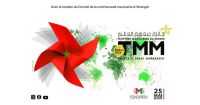Statistics Lithuania informs that an annual publication Demographic Yearbook 2014 has been released. The publication provides statistical information about the structure and demographic development of the Lithuanian population: birth and death rates, marriages, divorces, migration. Comparable demographic statistics of the European Union member states and population projections of the Statistical Office of the European Union (Eurostat) are provided.
The main source of statistical information on births, deaths, marriages, divorces, international and internal migration is the central database of the Residents' Register of the Residents' Register Service. The publication also contains statistical data from the state enterprise Centre of Registers, National Land Service under the Ministry of Agriculture and Health Information Centre of the Institute of Hygiene.
At the beginning of 2015, the estimated population of Lithuania amounted to 2 921.3 thousand, i.e. by 22.2 thousand (0.8%) less than at the beginning of 2014. In 2005–2014, the population declined by 433.9 thousand, or 12.9%.
The decline in the population in 2014 was caused by negative net international migration and the natural decrease. The impact of negative net international migration accounted for 55% of the total decline.
In 2014, the number of live births amounted to 30.4 thousand, which is by 484 more than in 2013. In 2014, the crude birth rate (the number of live births per 1000 population) stood at 10.3 (in 2013, 10.1).
In 2005–2014, due to negative net international migration, the population declined by 312.5 thousand (72% of the total decline), due to the natural decrease – by 121.4 thousand (28% of the total decline).
In 2014, 36.6 thousand residents emigrated from and 24.3 thousand persons immigrated to Lithuania. Compared to 2013, the number of emigrants decreased by 2.2 thousand (5.7%), that of immigrants – increased by 2.3 thousand (3.7%). The major part of immigrants – 19.5 thousand (80.4%) – were Lithuanian nationals who returned (remigrated) to Lithuania, 4.8 thousand (19.6%) – foreigners. Compared to 2013, the number of Lithuanian nationals who returned (remigrated) to Lithuania increased by 553 persons (2.9%), that of foreigners who immigrated to Lithuania – by 1.7 thousand (1.6 times).
In 2014, almost half (45.8%) of all emigrants chose the United Kingdom as their destination of emigration (in 2013, 46.1%). Ireland was chosen by 8.4% (in 2013, 8.5%), Germany – 7.9% (in 2013, 7.7%), Norway – 7.2% (in 2013, 7.7%), Russia – 3.5% (in 2013, 2.9%), United States – 2.9% (in 2013, 3.3%), Belarus – 2.8% (in 2013, 2.5%) of emigrants.
Source: The Baltic Course









